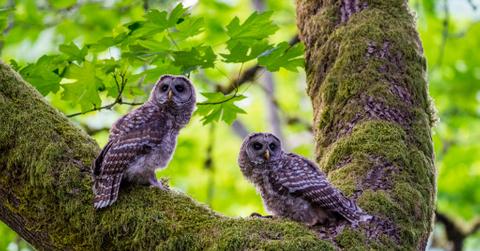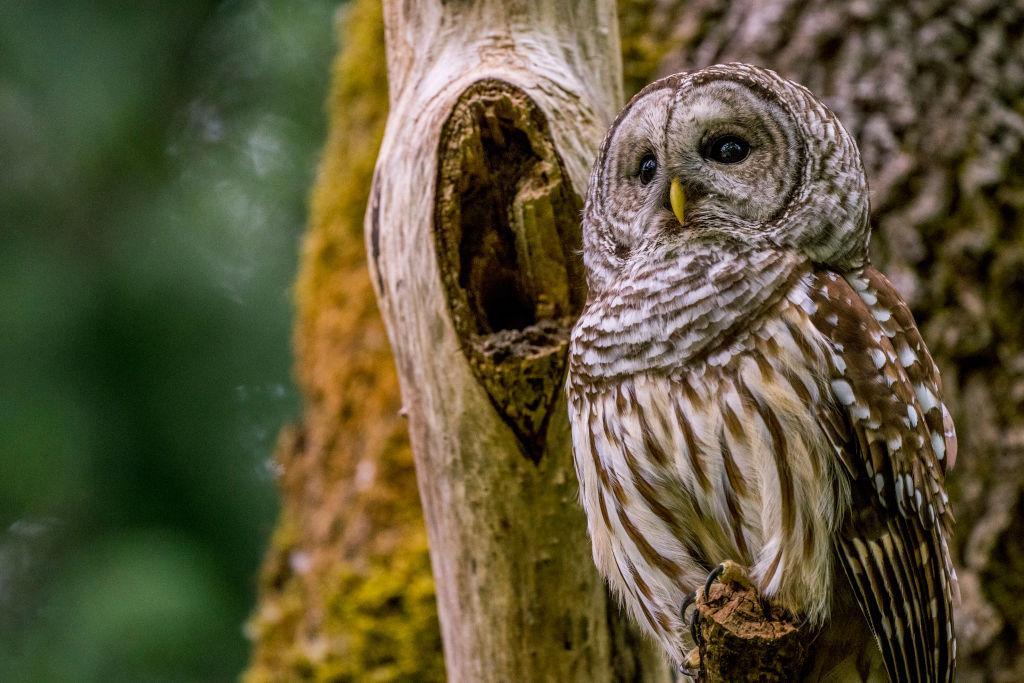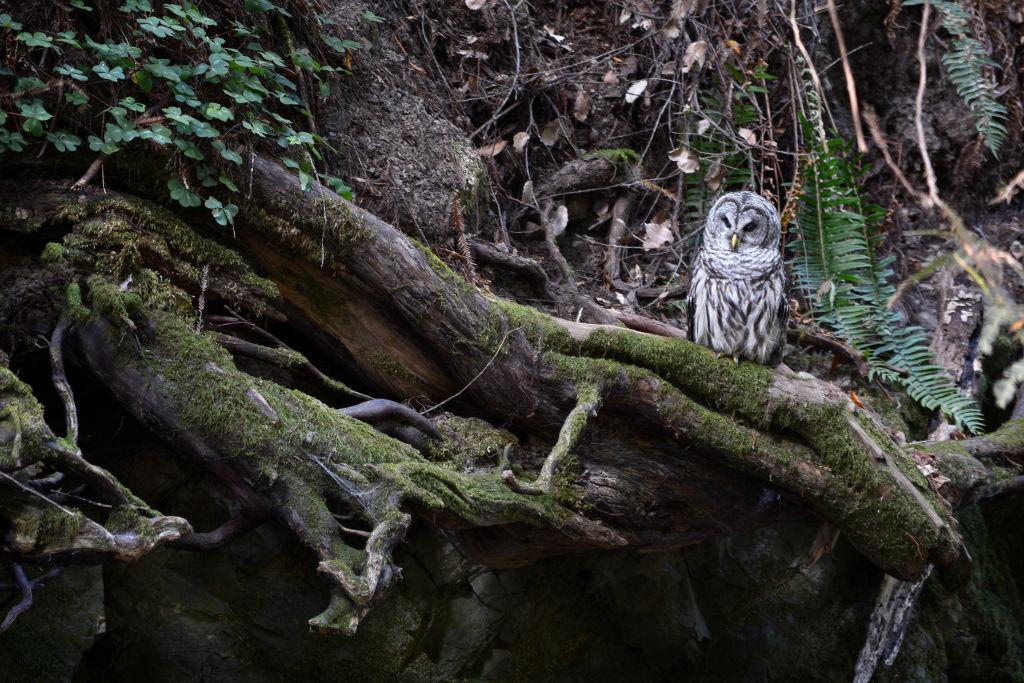U.S. Fish and Wildlife Service Proposes Killing Nearly a Half Million Owls Over 30 Years
Published Jan. 8 2024, 12:36 p.m. ET

The U.S. Fish and Wildlife Service (FWS) has drafted a population management strategy to address what they describe as the "invasive" barred owl's threat to the spotted owl population in the Pacific Northwest region of the U.S.
The proposal to remove barred owls from the spotted owl range calls for more than 470,000 barred owls to be "lethally removed" via "discharging a shotgun one to three times at a site, potentially repeated once or twice a year" over the next 30 years according to the FWS's November 2023 Draft Environmental Impact Statement. The plan is open to public comment through Jan. 16, 2024.

The U.S. Fish and Wildlife Service proposes killing barred owls to protect spotted owls.
The native northern spotted owl population has experienced a "rapid decline," according to the FWS plan, largely due to the barred owl, a larger apex predator. Though the California spotted owl hasn't experienced as steep of a decline, the FWS anticipates such a reality due to continuing competition in the southwest for resources.
The proposal includes luring barred owls to defined removal areas en masse through a broadcasting call that would sound "natural" to any humans within a reasonable distance to hear the broadcast.
As barred owls flock to the broadcasting call, officials awaiting their arrival will use shotguns to kill off the barred owls across the Sierra Nevada Mountain range, national parks, and other regions in the Pacific Northwest of the U.S.
Curiously, the FWS plan only briefly mentions the threat of deforestation and colonist intervention towards the introduction of the 264-page document before focusing mainly on its plan to trick and kill the owls.
According to NBC News, European settlers throughout the western part of the U.S. combined with over-logging in the Pacific Northwest are reasons for the introduction of the non-native barred owl to the region and subsequent deforestation that threatens wildlife.

Why are spotted owls endangered?
According to the FWS, spotted owls are endangered due to an ever-expanding barred owl population throughout the West. The competition for resources is in the non-native barred owl's favor as it is a "fiercely territorial" apex predator, as described in a U.S. Geological Survey (USGS) story.
As the barred owl is more comfortable than the spotted owl in a greater variety of environments and is more general in its appetite, it is better suited to survive and fight for limited resources, per the USGS.
To their credit, the USGS cites multiple research studies and "forest management policies and practices" that aided in preserving the population of spotted owls.
Nevertheless, officials conclude that these preservation strategies and practices are taxing, and the barred owl continues to expand its reach throughout the West, threatening the future of spotted owls.
While environmentalists and policymakers debate whether the devastating effects of deforestation are reversible, and despite the insatiable appetite for various entities to continue cutting down trees at an unsustainable rate, the public can still let their collective voice be heard on this plan and in general.